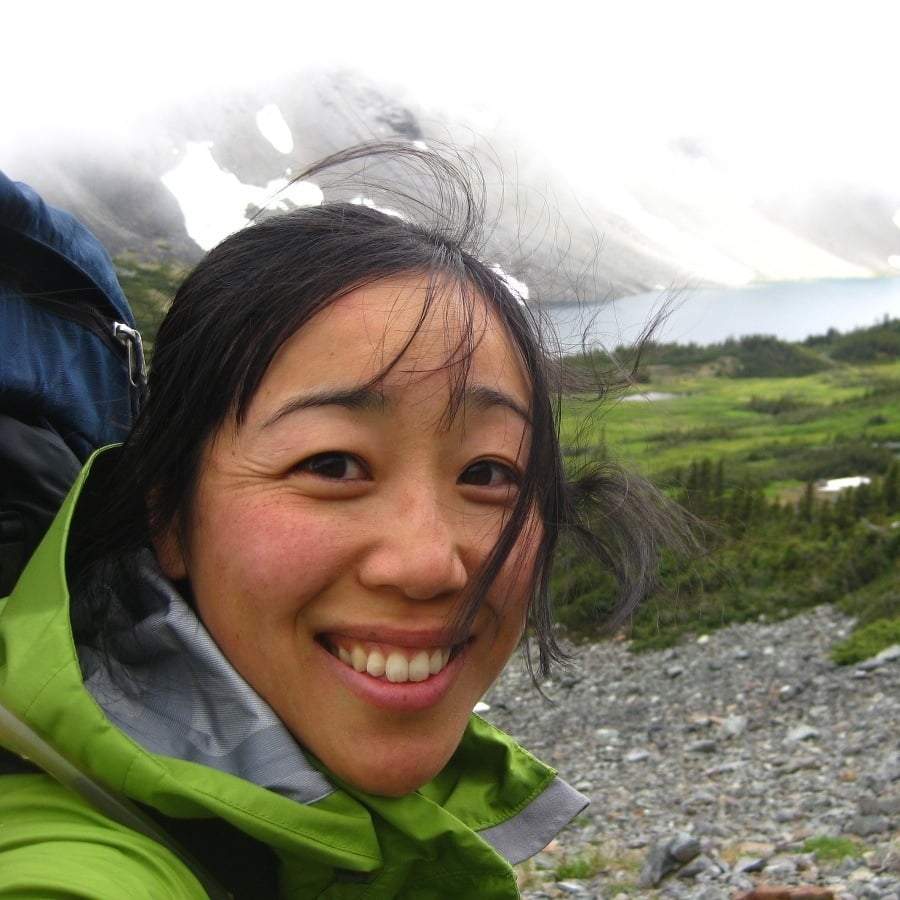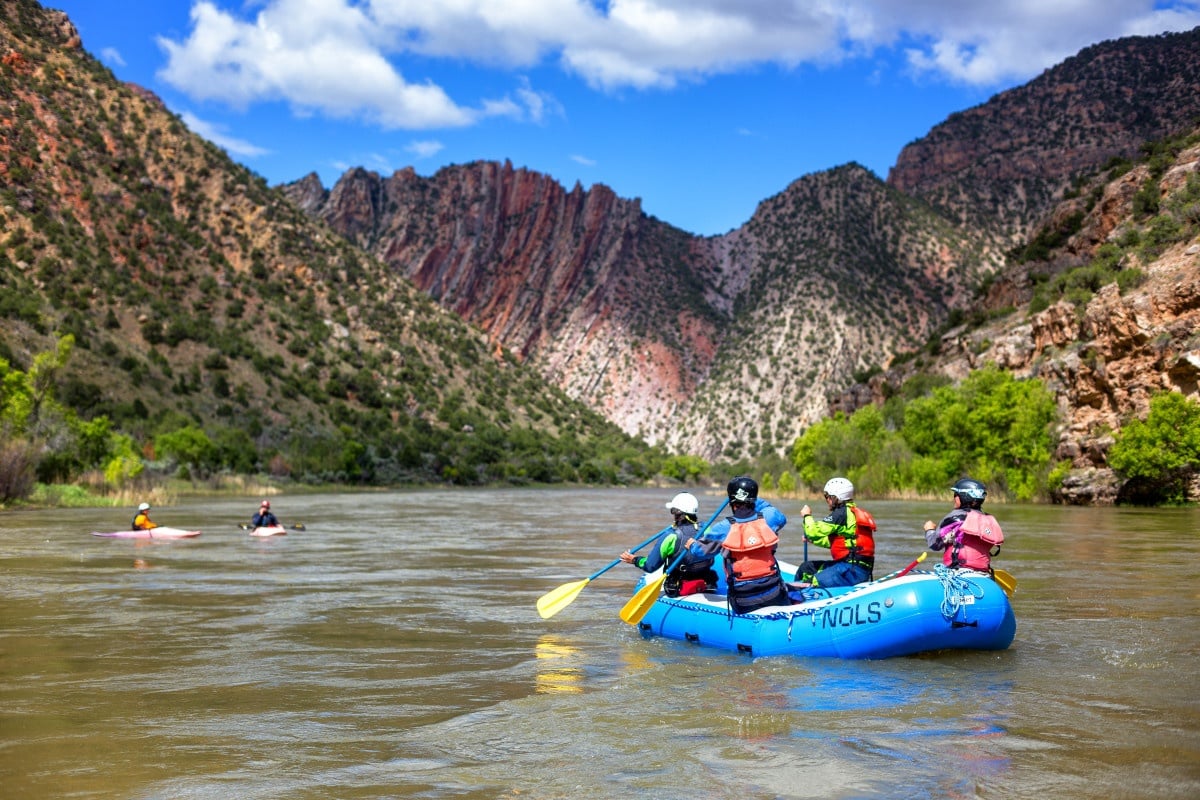
Editor’s note: Instructor Rumi Kodama takes us inside the connection between person and paddle as she develops her whitewater canoeing skills.
Knowing and understanding a canoe stroke goes much deeper than the movement of the paddle. It’s all about the interplay between the paddle, the canoe, and the movement of the water.
I was surfing for the first time in a solo canoe, carving across the wave. To maneuver your canoe just the way you want, the rules of the stroke depend on what the water dictates in that moment. It amazed me that I could take such a large vessel and hold it stationary in the middle of a constantly moving river.
It was January, in the midst of a season primarily reserved for snow sports, and I had enrolled in a four-day Moving Water Canoe Instructor Course near the town of Duncan on southern Vancouver Island.
Small towns like Duncan dot the one highway that runs north to south on the eastern side of the island. Hidden pockets of houses appear, and you’ll see small organic farms and homey cafes with signature recipes for butter tarts—a truly Canadian treat.
Spidering off from Duncan are intricate networks of country roads that weave through densely quiet temperate rainforests, thick with moss, ferns, and towering cedar, spruce, and Douglas fir trees. Snow and ice drip from the limbs of trees that steam, infusing the air with the scent of pure greenness.
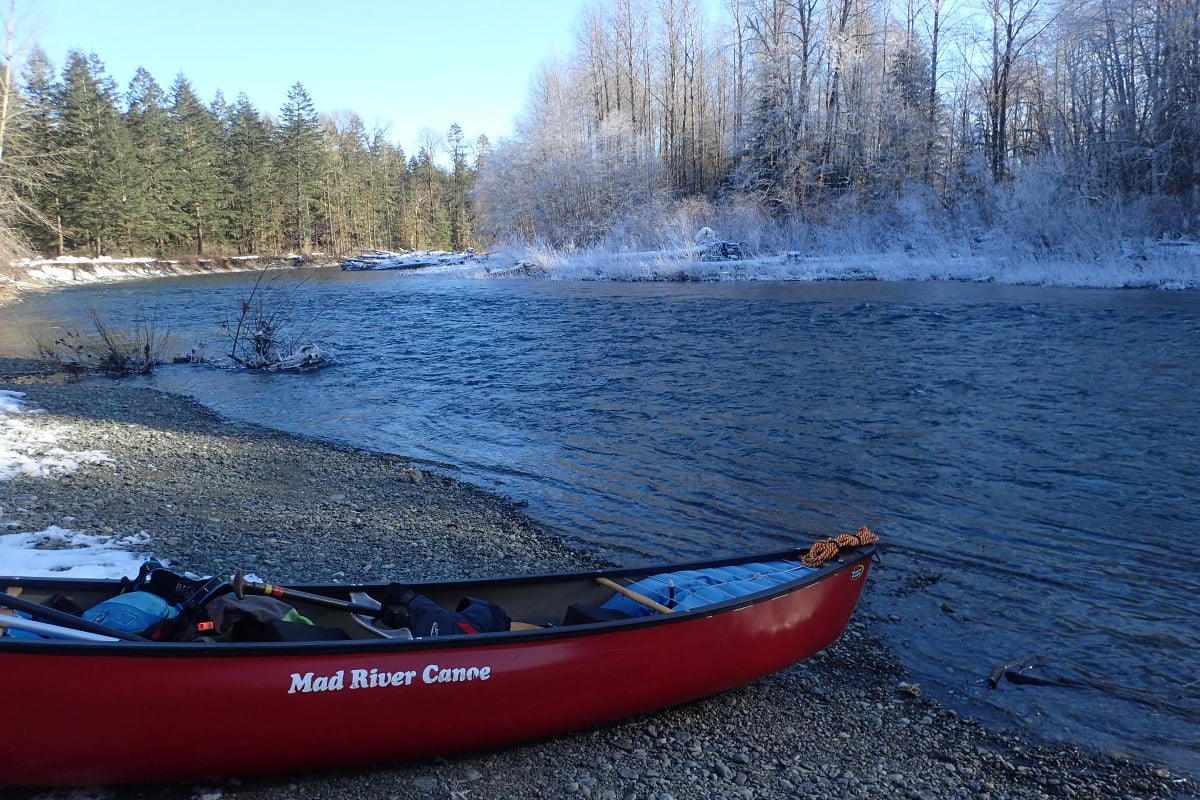
Throughout the course, my ability to read water improved as I practiced breaking down canoe maneuvers to the fundamentals to teach them better. I learned to see more eddies, which meant I could move my canoe more than just downriver.
One moment, I would be sitting still in an eddy as the river rushed in the opposite direction just a few inches on the other side of the eddy-line. Then, in a synchronized burst of strokes, I’d punch through the eddy line and into a wave trough, balancing the power of my strokes with the water and using its force to help ferry me across. I’d then arc downstream and change the angle and tilt of my canoe to slide into a small pocket eddy on the opposite side of the river, hardly having moved downriver. The river morphed in my mind into a playing field of hidden signals and opportunities, calling out to make my canoe dance.
In gaining this connection to the water, and learning to teach this skill to others, I built inner confidence and self-trust. It was inspiring to witness the fluidity of this connection in my instructor Fiona Hough, a senior examiner for Paddle Canada and open canoe whitewater slalom champion, as she gracefully taught us to break down these strokes.
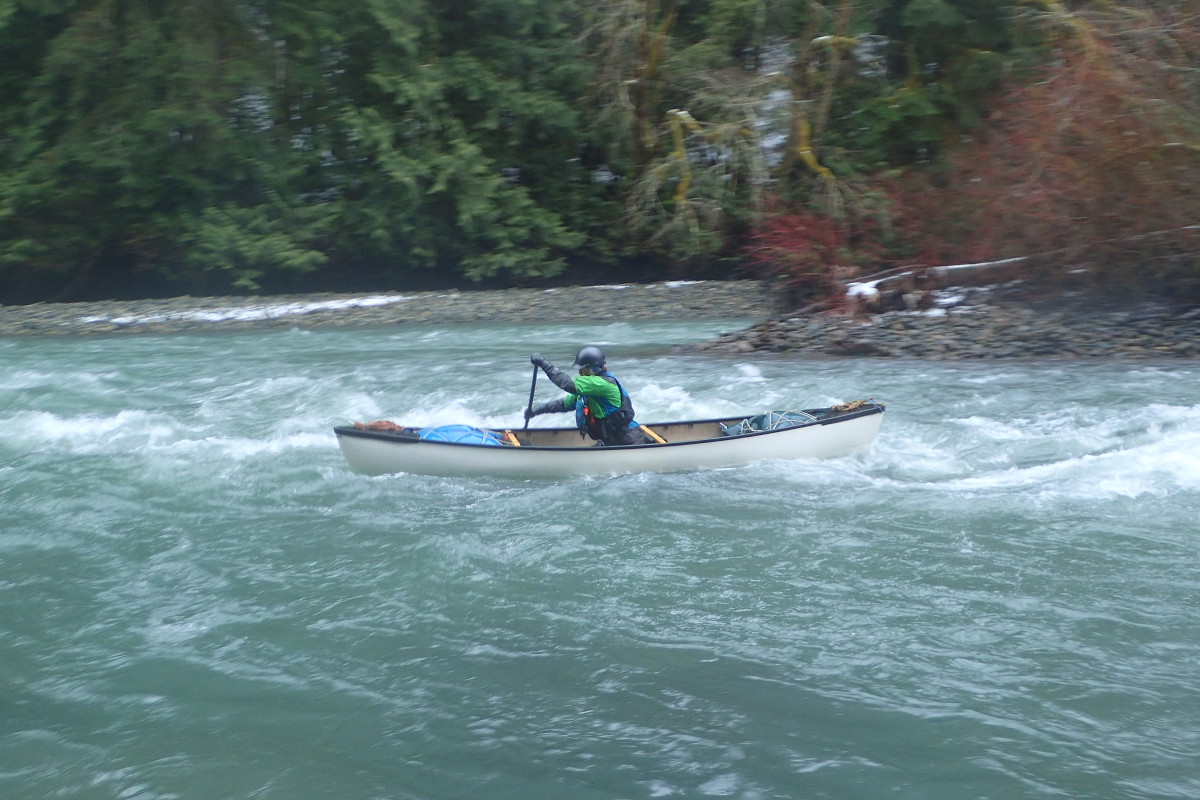
Spending more time on the water made me realize how my state of mind projects onto my actions: more self-trust in being aware of the water and my ability to manipulate it meant more confident and intuitive action.
I understood the water’s movement better as it flowed between rocks and gravel bars, seeing how my weight shifted the canoe itself. My emotions and thoughts as they moved inside my head inevitably made outward, sometimes subtle, expressions in my body movements. If my focus drifted even for a second, I wouldn’t achieve the intended maneuver.
These physical lessons translate into how I conduct myself in my daily life. The way I navigate my world depends on my ability to read the subtle signals and opportunities I see all around me.
For example, I find myself paying more attention to the cues people give as they speak to me. I look at the way they transfer thought through speech, and at the imprints their actions leave behind. From these clues, I try to discern what they are really trying to say. I also find myself stopping to think—how are my actions being interpreted? How are my thoughts being conveyed?
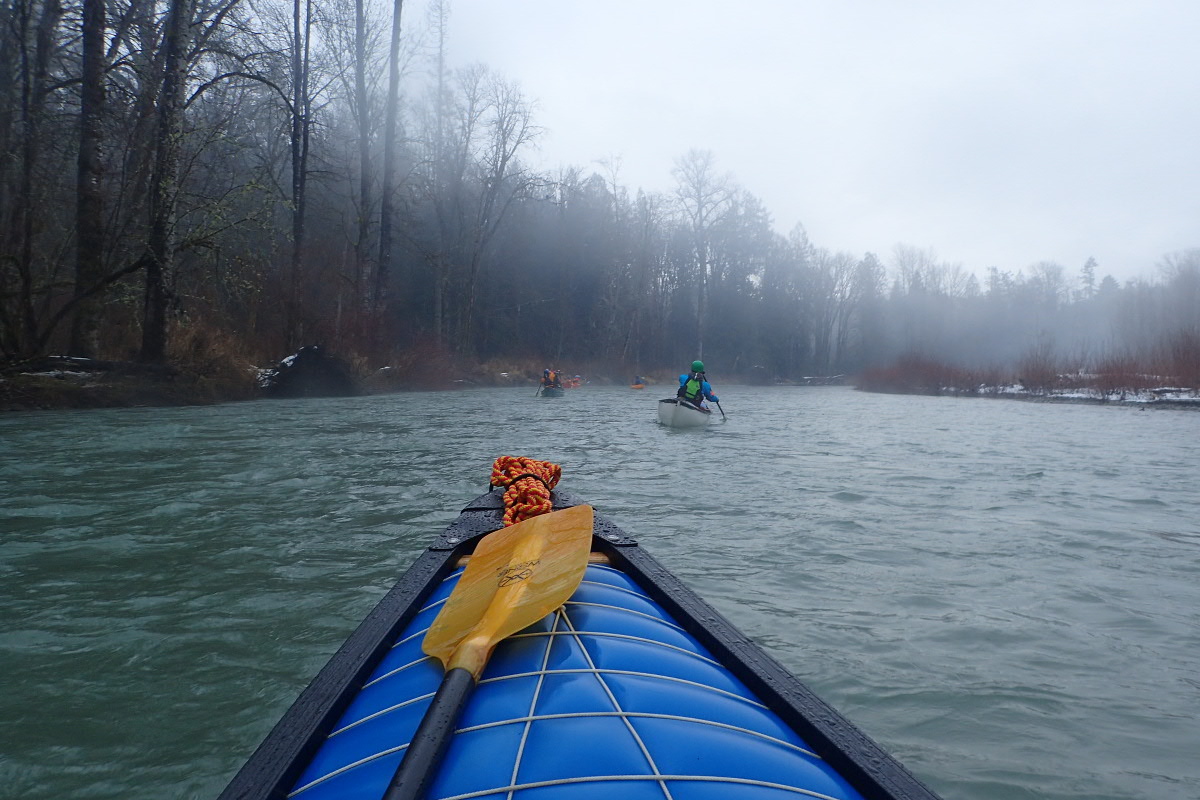
Overcoming the concrete challenge of a tough section of the river showed me how to see new possibilities and keep pursuing what yesterday I might not have thought possible. Canoeing continues to grow for me as an art form, a freedom of movement that transports my mind, and I am excited to share this with whoever I meet next.
Take on challenges of your own on whitewater and in the mountains on a Semester in the Rockies.
- Canoeing
- Whitewater
- Skills
- Nols Instructor
- Inspiring Women
- Whitewater Canoeing
- Women In Leadership
- Stories
- Instructor Stories
Written By
Rumi Kodama
Rumi is an expedition coordinator and wilderness therapy guide in Alaska, a NOLS instructor, Canadian, and paramedic. She likes to canoe on oceans and rivers, hike untrammeled mountains, and gravitates towards extreme races like the Yukon River Quest. In between adventures, she can be found spending quality time with a good book or working on a knitting project on her favorite couch in Prince Rupert, British Columbia.


